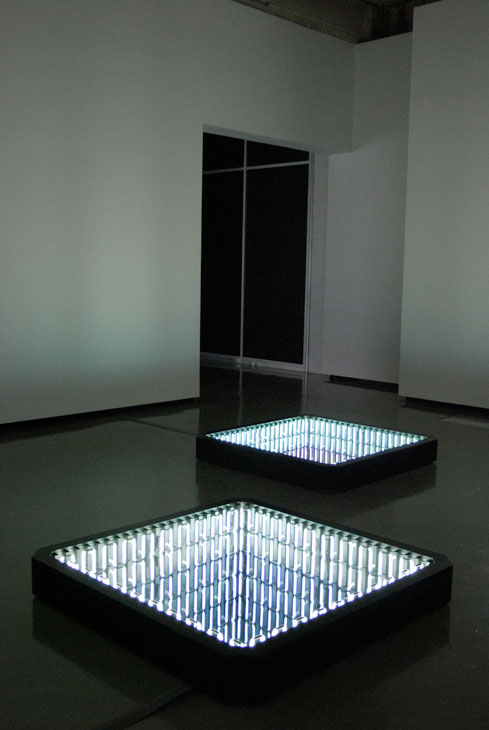The Imperial War Museum’s exhibition ‘Age of Terror: Art since 9/11’ has big ambitions for its most recent foray into contemporary art. Reflecting on the events of that day and their effect on perceptions of contemporary conflict through 50 works of art, the exhibition attempts to ‘offer a range of perpectives that allow us to consider the reality of living in a post-9/11 world’. Works are grouped according to four themes – ‘9/11’, ‘State Control’, ‘Weapons’ and ‘Home’ – with the final room focusing on the often underrepresented perspectives of artists in Iraq, Afghanistan and Syria. The compartmentalisation of works into such broad themes can seem arbitrary, however, and this arguably undermines the exhibition’s ability to produce meaningful dialogue. The somewhat obvious groups of works seem to illustrate the event rather than question its lasting effect on global politics.

Hans-Peter Feldmann’s work at the Imperial War Museum, London, 2017.
Opening the exhibition is a video work by Tony Oursler, an affecting piece of documentary footage filmed on the artist’s phone on the streets of New York in the immediate aftermath of the attacks. In the next room, an installation by Hans-Peter Feldmann, 9/12 Frontpage, displays the front pages of newspapers from around the world the following day; they carry headlines such as ‘Doomsday America’ and ‘A Declaration of War’ alongside harrowing images of the towers falling. From the outset, then, it is clear that the Imperial War Museum is dealing with the event historically, providing documentation through objects and art.
This method is problematic because it gives a sense of a closed episode in recent history. Sadly, opportunities for a more critical perspective are missed. In one work by Alfredo Jaar, an image of Obama’s National Security Council watching the operation to kill Bin Laden on 1 May 2011 is taken apart to question how media imagery shapes public perception. It would have done well to be placed alongside Feldmann’s installation, as together they address the ‘beginning’ and ‘end’ of a war mediated through images.

The Twin Towers (2011), Iván Navarro. © The Artist / Photo Thelma Garcia / Courtesy Galerie Daniel Templon, Paris-Brussels
Perhaps the most interesting work in the exhibition is by artist Kerry Tribe, who, two months after the attacks, placed a casting call in a Los Angeles movie industry magazine for individuals who ‘look like a terrorist’. The 29 people who responded to the call are seen in a reel of silent screen tests, staring menacingly out at the viewer. It is interesting to wonder why these Americans put themselves forward so close to the events of 9/11. What is more interesting, in light of recent debates over the definition and use of the term ‘terrorism’, is that many of those who came forward are white men who bear striking resemblances to far-right supremacists. Again, the performative power of the image is a key concern that the exhibition does not directly address.
That the Imperial War Museum has taken on such an important survey should be celebrated; its weakness, however, is in its sidestepping of some of the urgent questions about the reality of our ‘post 9/11 world’.
‘Age of Terror: Art since 9/11’ is at the Imperial War Museum, London, until 28 May 2018.
Unlimited access from just $16 every 3 months
Subscribe to get unlimited and exclusive access to the top art stories, interviews and exhibition reviews.














![Masterpiece [Re]discovery 2022. Photo: Ben Fisher Photography, courtesy of Masterpiece London](http://zephr.apollo-magazine.com/wp-content/uploads/2022/07/MPL2022_4263.jpg)
Suzanne Treister’s tarot offers humanity a new toolbox